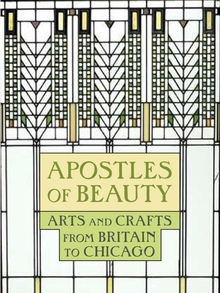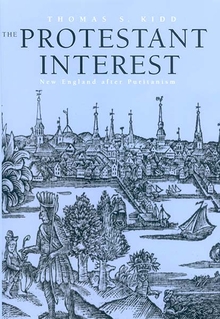America's Rome
WARNING
You are viewing an older version of the Yalebooks website. Please visit out new website with more updated information and a better user experience: https://www.yalebooks.com
Volume II—Catholic and Contemporary Rome

Read this book online via the A&AePortal, our art and architectural history eBook platform. To learn more about how to access this book, please contact us.
In this volume, Vance begins by examining the three foremost Roman Catholic symbols: the bambino, the madonna, and the pope. He traces for the first time the evolution of American writing on popes from the late eighteenth century to the election of Pope John Paul II, including fictional depictions of an American pope. Then, he explores the predominantly negative American reaction to Catholic baroque sculpture and architecture in the nineteenth century.
In the section on contemporary Rome, the author addresses American attitudes toward Rome’s earliest attempts at democratization, toward its aristocratic social structures, and toward the political changes that occurred after World War II.
"America’s Rome is easily the best—and certainly the most unexpected—revelation of our national character since Tocqueville."—Gore Vidal
"[A] wide-ranging study."—John Francis Philimore, Catholic Herald
"A rich archive for the study of American literature, as well as for the continuing impact of Rome itself."—Esmond Wright, Contemporary Review
"The author attempts (and succeeds beautifully) to categorize the works of art through Roman monuments that inspired the creative works. . . . From a critical standpoint, these volumes elucidate the realm of art and literature; from an American studies viewpoint, they document a vital social/psychological phenomenon unique to the U. S."—Choice
"Lavishly documented. . . . Vance’s study is a triumph of thoroughness, organization, and analysis. . . . The bibliography is a treasure trove, the citations are efficient. . . . Vance’s assessments of the impact of ancient Rome on early American political thought are useful for students of the classical tradition in America. Even better are his readings of American fiction dealing with Rome. Best yet are his analyses of American paintings on Roman themes. His discussions of John Vanderlyn’s ’Marius amid the Ruins of Carthage’ and Paul Cadmus’ ’Bar Italia’ are brilliant. America’s Rome documents our fitful but enduring marriage with Rome so persuasively that the study itself will stand as one of the enduring legacies of the union."—Susan Ford Wiltshire, Classical World
"Rome was not built in a day, nor was this book. The metaphor is not inappropriate, for America’s Rome is, in every sense of the word, a monumental work: a fully representative selection and profound analysis of American reactions to Rome, ranging from fascination to disgust (not to mention combinations of the two) over the lifespan of the American republic and the papacies of the fourteen Popes from Pius VII to John Paul II. The source material of William L. Vance’s lavishly illustrated volumes is vast and varied—fiction, poetry, journalism, criticism, private correspondence, painting, architecture and sculpture. And the book has much of interest and importance to say not only about Rome and the Romans but also . . . about America and the Americans."—Bernard Knox, Times Literary Supplement
"A rewarding piece of work, not least because of how it departs from the received wisdom within the field of interdisciplinary American Studies."—Sean Wilentz, London Review of Books
"A nation born yesterday meets the Eternal City inn this rich, anecdotal study of Americans in Rome."—New York Times Book Review And Bear in Mind
"Vance’s topic is the past 200 years of American artistic experience in Rome, and the representations of that adventure in ink, paint, marble and bronze. It’s scholarly but never dull, with reams of fascinating details."—International Herald Tribune (London)
"An enormously ambitious attempt to synthesize the city’s magical hold on Americans."—Philadelphia Inquirer
"America’s Rome is, in every sense of the word, a monumental work: a fully representative selection and profound analysis of American reactions to Rome, ranging from fascination to disgust (not to mention combinations of the two) over the lifespan of the American republic and the papacies of the fourteen Popes from Pius VII to John Paul."—Bernard Knox, Times Literary Supplement
"A chronicle of how early American artists and writers have reacted to the reality and symbolism of Rome."—Early American Life
"A magisterial piece of social and cultural history."—The Bookseller
"A rich archive for the study of American literature, as well as for the continuing impact of Rome itself."—Esmond Wright, Contemporary Review
"In this detailed and lavishly illustrated volume, Vance explores the image and idea of ancient Rome in the American imagination. . . . A thorough and well-written treatment."—Library Journal
"Interdisciplinary art, social, and cultural history in the broadest sense."—Journal of the Early Republic
"Scholarly and ingenious."—America
"An intriguing investigation of the impact of classical, Catholic and contemporary Rome on artists, writers and other."—History Today
"From a critical standpoint, these volumes elucidate the realm of art and literature; from an American studies viewpoint, they document a vital social/psychological phenomenon unique to the U. S."—Humanities: Art and Architecture
"A substantial preliminary sketch of relations between the Eternal City and visitors from the New World. Writers, painters, sculptors, philosophers, journalists, critics, students, diplomats and prelates have contributed to the record; what they carried away in their memories and imaginations makes a mighty record."—Robert M. Adams, New York Times Book Review
"This superb book is an invaluable resource for all scholars of American arts and letters."—Charles Eldredge, Hall Professor of American Art, University of Kansas, Lawrence
"A prodigious study of the influence of Rome on American arts and letters. . . . Roman art, architecture, politics, and thought come alive as reflected in American eyes. . . . An erudite, challenging, deeply informative work for those enamored of the Queen of cities."—Kirkus Reviews
Publication Date: September 10, 1989
34 illus.








